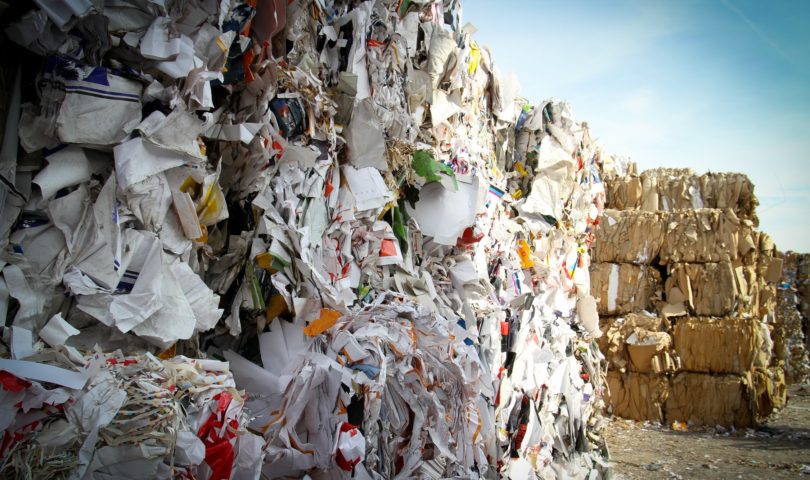Two years ago, China practically stopped accepting the world’s recyclable materials, forcing other countries, including America, to scramble in search of other ways to dispose of those recyclable products. In 2016, China imported about two-thirds of the world’s plastic waste-seven million tons a year; America exported 700,000 of that 7 million tons. Chinese billionaires profited from buying scrap paper and plastics to recycle into more products. However, at the end of 2016, the Chinese government declared that China would stop buying the world’s discarded plastics. The recycled materials countries were giving to China only consisted of 75% recyclable products and 25% trash. Much of the plastic was contaminated and therefore was hard and expensive to recycle. Additionally, some plastic was illegally snuck into China without permits. These recyclers dumped the stuff that they weren’t able to recycle, leading to land and water pollution. Recycled products lined the edges of China’s big port cities, reeking from chemicals and burning garbage. Furthermore, China’s growing middle class provided China with enough recyclables, leaving little need for recyclables from other countries. Since the ban, the Chinese government has shut down at least 148 unlicensed plastic recycling factories. In 2018, China accepted less than 1% of the amount it accepted in 2016.
After the ban, America looked for other countries to dump its recyclables. Some other southeastern countries, like Vietnam and Malaysia, accepted America’s recyclables for some time, but they were overwhelmed by the volume of plastic they received and have shut the imports down. Additionally, recyclables are being stockpiled in warehouses or just thrown away in the landfill.
“I think China is absolutely right to stop taking other people’s garbage. The garbage they were taking is just mixed trash; it wasn’t just pure plastic. We weren’t doing our share to make it a quality product for them. We are continuing to ship plastics to other places. We need to get a real program to deal with it. It’s a pretty classic market failure and a pretty classic place where government regulation would help,” comments Mr. Appleman, San Mateo’s environmental science teacher.
China’s ban has created pain and chaos in communities across America. In the US, municipalities have two options regarding what to do with the overwhelming volume of recyclables unable to be shipped overseas: they can either pay a substantial amount of money to get rid of recycled products or simply throw everything away. Because many communities cannot afford to pay to get rid of recycling, America is seeing an increase in landfilling. Most states have fees for landfills, creating additional expenses. The city of Bakersfield in California went from earning $65 a ton for its combined recyclables in 2016 to paying $25 a ton to get rid of those recyclables. Also, Stamford, Connecticut earned $95,000 from its recyclables in 2017 and paid $700,000 to get rid of them in 2018. Communities are cutting back and even eliminating not just plastic but also glass.
China is focusing on rebuilding the recycling industry and cares more about quality over quantity, and many believe that America should do the same to its recycling system. China has accepted America’s trash for 40 years, allowing America’s recycling system to deteriorate and Americans to be less intentional about what they throw away. Before 2017, America opted for the cheaper single-stream method for recycling, in which all recyclables go into one bin that is picked up by the trash truck instead of the more expensive curbside sorting. Now, Americans are forced to improve their methods and mindsets toward recycling. Nonprofits are working to educate and improve recycling rates. For example, the Closed Loop Fund is a $100 million effort by large companies to boost recycling, providing loans and investments to communities to upgrade their facilities. Other nonprofits, like Keep America Beautiful, inspires and educates people to take action daily to improve and beautify their community environment. Although China placed the recycling ban two years ago, the ban’s effects are still being felt today. Communities in America are still working to improve their recycling programs, and many Americans are making conscious efforts to recycle properly. However, simply recycling correctly is not enough. Making the effort to use reusable products is the next step in ensuring a happy, healthy planet.

